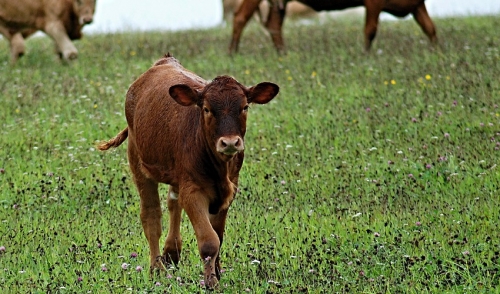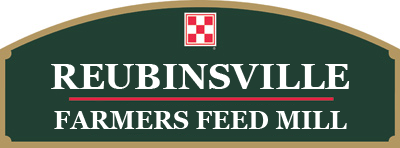
Management Tips for First Calf Heifers
First-calf heifers are among the most challenged members of the herd. They require special care to successfully make the transition from birthing their first calf to becoming a reproductively efficient cow that produces a healthy calf each year and breeds back early. In a nutshell, that is the goal of heifer management.
The first-calf heifer, which may breed for the first time at about 15 months and have the first calf when she is two years old, faces many physical and nutritional stresses associated with:
- parturition
- lactation
- continuing her own growth (she won’t be mature until age 3)
- maintaining an optimal body condition score
- repairing the reproductive tract
- overcoming any post-partum disease and returning to normal estrus cycles
- preparing to conceive in her second breeding season
“Ultimately, the primary hurdle for the first-calf heifer to overcome is to become pregnant during her second breeding season. In most cattle operations, cows that do not calve once a year are culled because they become an economical liability. If we can ensure that our first-calf heifers are pregnant by the end of the second breeding season, most of our goals regarding first-calf heifer management will have been achieved,” notes G. C. Lamb, North Central Research and Outreach Center, University of Minnesota.
“A body condition score (BCS) of 6 at calving appears to be optimum for first calf heifers to achieve successful calving and reproductive performance. BCS is an excellent tool for monitoring nutritional status and for making decisions regarding changes in the nutrition and management of first-calf heifers,” says Don Boggs, extension beef specialist at South Dakota State University.
A Louisiana study found that first-calf heifers with a BCS of 6 or 7 had higher pregnancy rates and a shorter interval from calving to pregnancy than heifers with a BCS of 4 or 5. (The BCS, from 1 to 9, with 1 being emaciated and 9 being obese, is an effective visual indicator of a cow’s condition.)
The BCS considers numerous reference points, such as physical weakness, muscle atrophy, whether there is a visible outline of the spine and ribs, hip and pin bones, and the presence of fat in the brisket, flanks, udder and tail head. Critical weight guidelines to keep in mind include:
Before breeding, the heifer should be at 65 percent (bos taurus heifers) or 75 percent of mature body weight (bos indicus heifers).
Before calving, all heifers should be at 85 percent of mature body weight.
The last three months of gestation is critical for both the calf and the heifer. Approximately 70 percent of fetal growth occurs during this period. This is also a critical time for preparing the heifer nutritionally for calving, lactation, and rebreeding.
To be reproductively efficient, a heifer needs energy, protein, minerals and fat to support growth and performance, including reproduction, bone structure, muscle development, milk production, digestion and metabolism.
Use of organic trace minerals from 60 days prior to the heifer calving to 60-80 days after calving also is recommended to improve overall reproductive performance, reduce postpartum intervals, and increase calf weight.
Purina offers many fine products for heifer development and nutrition:
- Purina minerals are specially formulated for regional and seasonal needs and are readily absorbed by cattle. Purina minerals successfully offset forage deficiencies, and are palatable and reliable. Ask your Purina dealer about the Wind & Rain weather-resistant line of minerals to determine the products that will serve your specific needs.
- For trace mineral supplementation 60 days prior to calving to up to 80 days after calving, use Purina’s Wind & Rain All-Season 7 Complete Availa-4, a balanced combination of organic zinc, manganese, copper, and cobalt.
- PurinaÅfs Accuration/Cattle Limiter program, which works with forage and utilizes PurinaÅfs Intake Modifying Technology, is ideal for conditioning first- and second-calf heifers. This is one of two product lines Purina offers for heifers. The other is the 4-Square Brand Stocker/Grower product line that enhances forage digestion through balanced protein and energy supplementation.
In addition to providing good nutrition, manage your first-calf heifers well by keeping them apart from more mature cows, which can be aggressive competitors for food, adding even more stress to the life of the first-calf heifer.
Heifers that are maintained optimally and successfully bred back for a second season are on track for being reproductively efficient cows that will more than recoup the producer’s investment in them.
